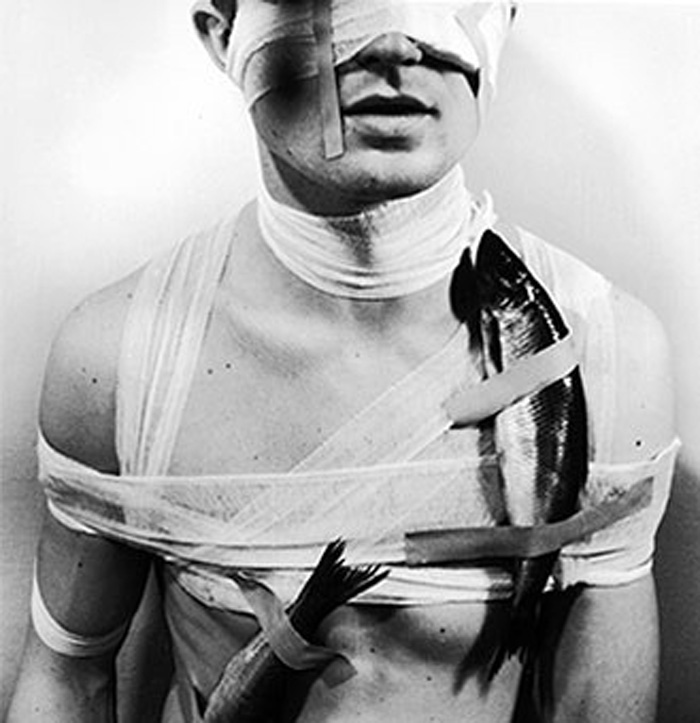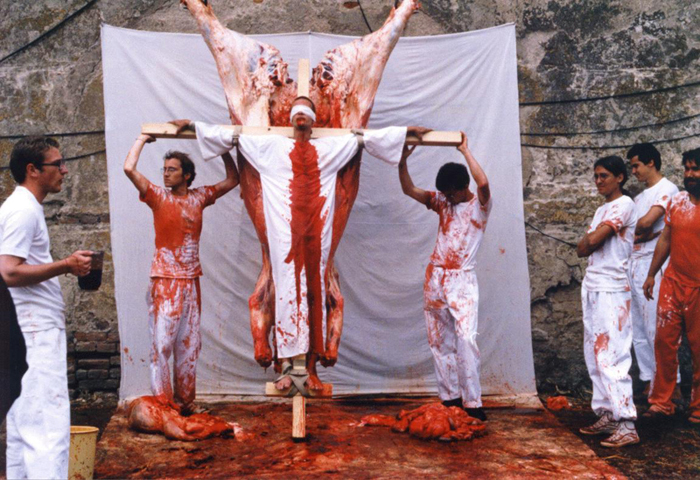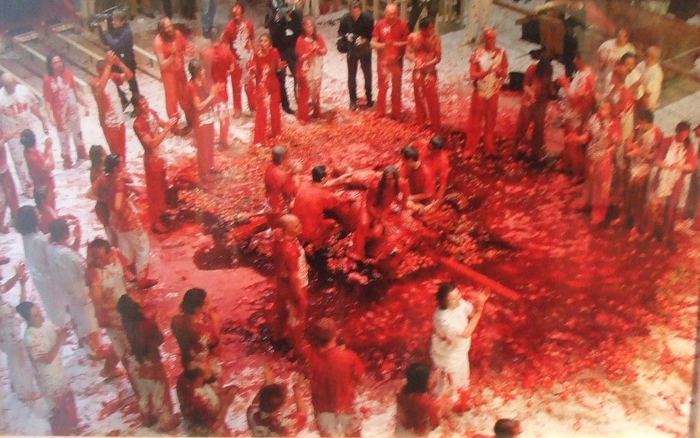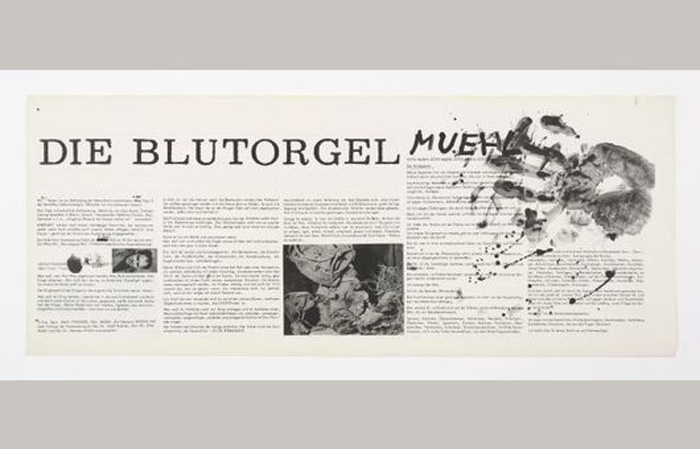Blurred Lines
In the early sixties a group of Austrian artists began to break the taboos of the society and provoke the consumerism oriented Austrian society. It was called the „Vienna Actionism“ and were the main contributors to the international development of the Austrian avantgarde, who broadened the art term in the sixties. Among the Vienna Actionists were Otto Mühl, Günter Brus and Hermann Nitsch, who’s recent work can be seen at DIRIMART in Istanbul.
After the fifties with its art influenced by a restricted political and cultural climate, it became their joint concern to “make art to leave art” in order to blur the lines between art and life. They meant to create a way to experience reality as pure, as unaltered as possible and as unrestricted. Their paint and material based actions, the involvement of the body and their manifests were outrageous and brave in how they put the preexisting order in society off.
The Actionism was set off in 1962 with a spectacular artistic collaboration of Hermann Nitsch, Otto Mühl and Adolf Frohner entitled “Action Blood Organ”, which ended up making art history. It was a three day long performance, in which they immured themselves into a studio basement in Vienna. There, over the course of the three days, Hermann Nitsch made his characteristic splatter paintings, Adolf Frohner created object montages, and Otto Mühl build junk sculptures. At the end of those days, the audience was to remove the previously built bricks and expose the artists and their work. What was bared was the sight of them crucifying, disemboweling, and tearing up a dead lamb. The slaughtered and skinned lamb was nailed head down onto an arch, its internal organs placed on a table and poured with more blood and hot water, all while white cotton sheets were hung up everywhere, to serve as a contrast to the bright red color of the blood. The soiled white sheets covered in blood splatters and dirt were later exhibited.
Especially Hermann Nitsch had a fascination for the symbolic meaning of the lamb, its deeply rooted status as a Christian allegory of being the symbol for the human sacrifice made by Jesus Christ with his crucifixion. The so called Lamb of God is a recurring and popular figure in the religious symbolism and art, particularly present in the traditionally very Catholic Austria, but in this first performance by the Vienna Actionism group in 1962, the symbolism was perverted, because the lamb was crucified upside-down. Nitsch would frequently refer to catholic rituals and ceremonies in his art. He was intrigued by them as well as by the affiliated suffering, which he expressed with the undeniable and polarising art he created. The religious aspect of the slaughtering of the lamb was his focus, accompanied by his blood splattered paintings, almost like a Eid al-Adha but in the name of art. Believers would accuse him of blasphemy, animal rights activists were concerned about how he showcased animals and others objected to the raw brutality he used against humans in his performances.
The highly controversial “Action Blood Organ” performance had a corresponding manifesto which was a humorous provocation to the outraged public in Austria. It was a description of the related performance and an elaboration on how they would do their art (for example it was to be “sharpened, poured, flooded, splattered, smudged, dripped, splashed, brushed, pasted, scratched, scraped, wiped, smeared, blurred, dabbed, stirred, churned, crawled in the painting, wallowed in the paint, arched out of the painting.”). It was just the prelude to a series of out of the box actions that dared to take a step further from mere action painting to actual action theater.
The artists associated to the Vienna Activism remained dedicated though, and their commitment took most of them to jail at some point or another. They all had this very specific view on the world and its order, and did not shy away from expressing it with their work, which frequently butt heads with the law.
The art gallery DIRIMART in Nişantaşı in Istanbul shows selected works from the recent painting performance by Hermann Nitsch until March 8th 2014. The pieces stem from his 66th painting performance held in November 2013 as part of the Contemporary Istanbul 2013.
The Kunsthalle Krems is opening their exhibition “BLOOD ORGAN. Adolf Frohner’s early years in Vienna Actionism” on Saturday, September 6th 2014 on the occasion of Adolf Frohner’s 80th birthday. The presentation of documenting material about the “Action Blood Organ” along with an extensive retrospective of his life’s work will be shown until April 5th 2015.




